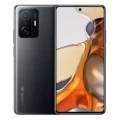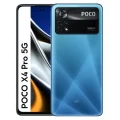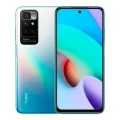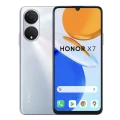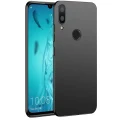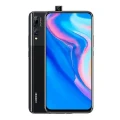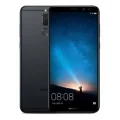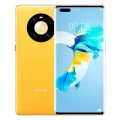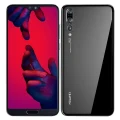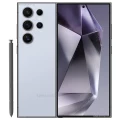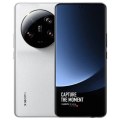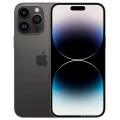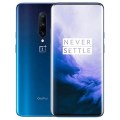- Awesome page
- Latest Mobile
- Smartphones
- Xiaomi 13T Pro
Xiaomi 13T Pro
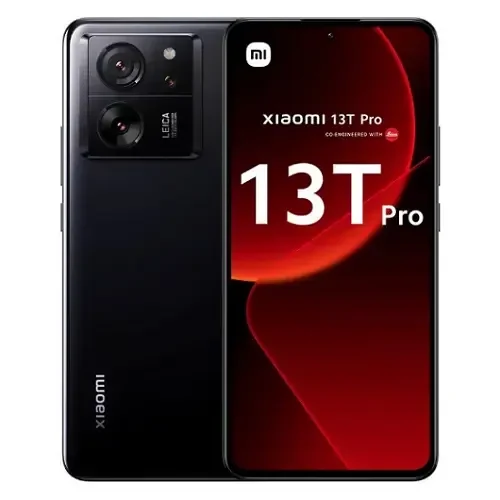


Xiaomi 13T Pro Price in Bangladesh
The Xiaomi 13T Pro is available in three variants: 256GB/12GB RAM, 512GB/16GB RAM, and 1TB/16GB RAM. This flagship device is powered by the high-performance MediaTek Dimensity 9200+ (4nm) chipset and runs on Android 13, ensuring smooth and efficient performance.
It features a 5000mAh battery with an impressive 120W fast charging capability, allowing the device to recharge quickly.
Price in Bangladesh
The Xiaomi 13T Pro is priced at BDT 110,000.
Specifications
General
| Model | Xiaomi 13T Pro |
| Announced | 23-09-2023 |
| Released | 23-09-2023 |
| Status | Available |
| Official price | 110000 |
Design
| Dimensions | 162.2 x 75.7 x 8.5 mm (6.39 x 2.98 x 0.33 in) |
| Weight | 200 g or 206 g (7.05 oz) |
| Colors |
Alpine Blue, Meadow Green, Black |
Network
| Technology | GSM / HSPA / LTE / 5G |
| 2G Network |
GSM 850 / 900 / 1800 / 1900 - SIM 1 & SIM 2 |
| 3G Network |
HSDPA 800 / 850 / 900 / 1700(AWS) / 1900 / 2100 |
| 4G Network |
1, 2, 3, 4, 5, 7, 8, 12, 13, 17, 18, 19, 20, 25, 26, 28, 32, 38, 39, 40, 41, 42, 48, 66 |
| 5G Network |
1, 3, 5, 7, 8, 20, 28, 38, 40, 41, 66, 75, 77, 78 SA/NSA |
| GPRS <strong>GPRS</strong> (General Packet Radio Service) is a packet oriented mobile data service on the 2G and 3G cellular communication system's global system for mobile communications (GSM), Generally, GPRS is used for the purpose of wireless data transfer, such as sharing pictures and videos or browsing the Internet via a mobile phone connection. | |
| EDGE <strong>EDGE</strong> (Enhanced Data GSM Environment) is a wireless network technology generally considered the next step in the 2G network offers data transfer rates up to four times faster than ordinary GSM networks, Generally, EDGE is used for the purpose of wireless data transfer, such as sharing pictures and videos or browsing the Internet via a mobile phone connection. | |
| Speed | HSPA, LTE-A, 5G |
Display
| Display Type <strong>Display Technology => </strong> A number of display technologies and types used in mobile phones => TFT (Thin Film Transistor), IPS (In-Place Switching), OLED (Organic Light Emitting Diode), AMOLED (Active-Matrix Organic Light-Emitting Diode), Super AMOLED (an even advanced version of AMOLED), Resistive Touchscreen (Resistive touchscreens contain two layer of conductive material with a very small gap between them which acts as a resistance), Capacitive Touchsceen (Capacitive touchscreen technology consists of a layer of glass coated with a transparent conductor) | AMOLED capacitive touchscreen, 68B colors |
| Size | 6.67 inches, 107.4 cm2 (~87.5% screen-to-body ratio) |
| Resolution | 1220 x 2712 pixels, 20:9 ratio (~446 ppi density) |
| Features |
144Hz, Dolby Vision, HDR10+, 1200 nits (HBM), 2600 nits (peak) |
Camera
Main camera
| Camera Setup | Triple |
| Primary <strong>Camera</strong> is able to capture photographs and usually videos, The most important characteristics of a camera are the resolution (measured in megapixels), lens focus type (fixed or automatic), higher megapixel cameras are known to capture higher quality photos, but not always a good measurement of the photos quality. |
50 MP, f/1.9, 24mm (wide), 1/1.28&quot;, 1.22µm, PDAF, OIS 50 MP, f/1.9, 50mm (telephoto), 1/2.88&quot;, 0.61µm, PDAF, OIS, 2x optical zoom 12 MP, f/2.2, 15mm (ultrawide), 1/3.06&quot;, 1.12µm |
| Features |
Leica lens, Dual-LED dual-tone flash, HDR, panorama |
| Video | 8K@24fps, 4K@24/30/60fps, 4K/1080p@30fps HDR10+, 1080p@30/60/120/240fps; 10-bit LOG, gyro-EIS |
Selfie camera
| Camera Setup | Single |
| Primary <strong>Camera</strong> is able to capture photographs and usually videos, The most important characteristics of a camera are the resolution (measured in megapixels), lens focus type (fixed or automatic), higher megapixel cameras are known to capture higher quality photos, but not always a good measurement of the photos quality. |
20 MP, f/2.2, (wide), 0.8µm |
| Features |
HDR |
| Video | 1080p@30fps, HDR10+ |
Hardware
| Chipset <strong>Chipset</strong> is a group of integrated circuits designed to perform one or a more dedicated functions, often with real time computing constraints, Popular smartphones are equipped with more advanced embedded chipsets that can do many different tasks depending on their programming. | Mediatek Dimensity 9200+ (4 nm) |
| CPU <strong>CPU</strong> (Central Processing Unit) mostly known as processors, CPU processes instructions in order to carry out certain functions that make your device operate properly. Processors are often described as the brain of computers, smartphones and tablets, Smartphones and tablets rely on processors to carry out their every task, Processors are an incredibly important factor in selecting any type of computing device, including your smartphone. | Octa-core (1x3.35 GHz Cortex-X3 & 3x3.0 GHz Cortex-A715 & 4x2.0 GHz Cortex-A510) |
| GPU <strong>GPU</strong> (Graphics Processing Unit) is a single-chip processor designed to rapidly manipulate and alter memory to accelerate the creation of images in a frame buffer intended for output to a display, This includes things such as lighting effects, object transformations, and 3D motion. | Immortalis-G715 MC11 |
| RAM (Memory) <strong>RAM</strong> (Random Access Memory) is a type of computer memory that can be accessed randomly, any byte of memory can be accessed without touching the preceding bytes that allows information to be stored and accessed quickly from random locations. RAM is the most common type of memory found in computer systems, smartphones, tablets and other electronic devices. | 12/16 GB |
| Internal Storage <strong>Internal Storage</strong> is a data storage space (flash memory) mostly used in smartphones, tablets and other electronic devices where operating system, apps, music, photos, videos, files and other user data Is stored. | 256/512 GB / 1TB UFS 4.0 |
| Sensors <strong>Sensors</strong> are electronic components that detects and responds to some type of input from the physical environment. The specific input could be light, heat, motion, moisture, pressure and location, The output is generally a signal that is converted to use in computing systems, a location sensor, such as a GPS receiver is able to detect current location of your electronic device. |
Fingerprint (under display, optical), accelerometer, gyro, proximity, compass, color spectrum |
Connectivity
| Bluetooth <strong>Bluetooth</strong> is a wireless communications technology for exchanging data between mobile phones, headsets, computers and other network devices over short distances without wires, Bluetooth technology was primarily designed to support simple wireless networking of personal consumer devices. | 5.4, A2DP, LE |
| Infrared <strong>Infrared</strong> connectivity is an old wireless technology used to connect two electronic devices. It uses a beam of infrared light to transmit information and so requires direct line of sight and operates only at close range. | |
| USB | USB Type-C 2.0, OTG |
| GPS <strong>GPS</strong> The Global Positioning System is a satellite-based radio navigation system, GPS permits users to determine their position, velocity and the time 24 hours a day, in all weather, anywhere in the world, In order to locate your position, your device or GPS receiver must have a clear view of the sky. | GPS (L1+L5), GLONASS (G1), GALILEO (E1+E5a), NavIC (L5), BDS |
| NFC <strong>NFC</strong> (Near field communication) is a set of standards for smartphones and similar devices to establish peer-to-peer radio communications with each other by touching them together or bringing them into proximity, usually no more than a few inches. |
Battery
| Battery Type <strong>Battery Type => </strong> Cell phones run on various kinds of batteries depending on the manufacturer, phone size or shape and features. There are basically four types of cell phone batteries => Lithium Polymer, Lithium Ion, Nickel Metal Hydride and Nickel Cadmium. | Non-Removable Li-Po |
| Capacity <strong>Battery Capacity</strong> is a measure (typically in Amp-hr) of the charge stored by the battery, and is determined by the mass of active material contained in the battery. The battery capacity represents the maximum amount of energy that can be extracted from the battery under certain conditions. | 5000 mAh |
| Charging Charging | 120W wired, PD3.0, QC4, 100% in 19 min (advertised) |
Xiaomi 13T Pro Review: The Budget Flagship You’ve Been Waiting For
For tech enthusiasts, gamers, and budget-conscious consumers alike, the Xiaomi 13T Pro promises to strike a perfect balance between performance, design, and affordability. With flagship specs at a mid-tier price, this smartphone has raised eyebrows in the industry. But does it live up to the hype? This comprehensive review dives into every aspect to see if the Xiaomi 13T Pro is worth your investment.
Design and Build Quality
The Xiaomi 13T Pro exudes sophistication with its premium design. Featuring a glass front and back, paired with an aluminum frame, the build feels solid and durable. The smartphone is available in a variety of sleek color finishes, such as Alpine Blue and Meadow Green, catering to users who value aesthetics.
The device is ergonomically designed, with curved edges and a weight distribution that makes it comfortable to hold during prolonged use. At 8.5mm thick and weighing 200g, it strikes a fine balance between sturdiness and portability. It also boasts an IP68 water and dust resistance rating, making it more durable in challenging conditions.
Highlights:
- Premium aluminum frame with a minimalist design.
- IP68 rating for water and dust resistance.
- Available in multiple color options to suit personal style.
The design clearly aims to deliver the experience of a flagship smartphone at a more affordable price point.
Performance and Gaming Experience
At the heart of the Xiaomi 13T Pro is the powerful MediaTek Dimensity 9200+ chipset (4nm), paired with up to 16GB of RAM and storage options ranging from 256GB to 1TB. This combination ensures a lightning-fast experience, whether you’re streaming content, editing videos, or gaming competitively.
Benchmarks place the 13T Pro among the top-performing smartphones in its class. From regular multitasking to graphically-intensive games like Genshin Impact and Call of Duty Mobile, the phone handles everything seamlessly.
For gamers, Xiaomi has integrated an intelligent cooling system that prevents overheating during extended sessions, which keeps performance consistent over time.
Highlights:
- MediaTek Dimensity 9200+ (4nm) chipset for flagship-level performance.
- Up to 16GB of RAM and 1TB of storage for heavy workloads.
- Efficient cooling system for intensive gaming.
The Xiaomi 13T Pro’s performance ensures it’s more than capable of meeting the needs of both productivity-focused users and hardcore mobile gamers.
Camera Quality and Features
If you’re someone who enjoys photography or videography, the Xiaomi 13T Pro won’t disappoint. Its Leica-powered camera setup includes a 50MP primary sensor, a 12MP ultra-wide lens, and a 50MP telephoto lens for crisp and clear shots in various scenarios.
Daylight shots deliver sharp details with vibrant colors, while night photography is handled beautifully thanks to improved AI-driven software and optical image stabilization (OIS). Portraits with Leica filters add an aesthetic edge, producing tones that feel cinematic and professional.
For video creators, the Pro-level recording features such as 8K video and enhanced stabilization elevate content creation capabilities.
Highlights:
- 50MP Leica-powered main lens ensures professional-grade photography.
- Ultra-wide and telephoto lens support versatile shooting.
- Advanced AI modes and Leica filters for creative shots.
For tech enthusiasts looking to document their worlds with style and precision, the Xiaomi 13T Pro’s camera setup is a game-changer.
Battery Life and Fast Charging
The Xiaomi 13T Pro comes with a 5000mAh battery, which easily lasts an entire day even with intensive usage. Whether you’re gaming, streaming, or browsing, the device offers reliable battery performance.
But what makes it truly stand out is the 120W HyperCharge technology. Xiaomi claims you can juice up your device from 0 to 100% in just 19 minutes—a claim that holds up impressively well in real-life tests.
Highlights:
- 5000mAh battery provides full-day usage.
- 120W fast charging fully charges the device in under 20 minutes.
This feature is particularly appealing for busy professionals and gamers who prefer minimal downtime.
User Interface and Software Experience
The Xiaomi 13T Pro runs on MIUI 14, based on Android 13, offering a feature-rich and customizable user interface. The software is responsive and packed with productivity tools, such as a built-in screen recorder and split-screen multitasking.
However, like many Xiaomi devices, it comes with a fair amount of bloatware that some users may find unnecessary. The good news? Most of it can be uninstalled or ignored without impacting performance.
Xiaomi has improved its commitment to updates, assuring users of regular security patches and major Android upgrades.
Highlights:
- MIUI 14 provides intuitive and customizable features.
- Some pre-installed apps might detract from a clean experience.
Overall, the software experience strikes a balance between robust functionality and minor compromises.
Price and Value for Money
Pricing is where the Xiaomi 13T Pro truly shines. Starting at around $750 (USD), it undercuts many flagship smartphones while delivering similar—if not better—performance and features.
Compared to competitors like the Samsung Galaxy S23 and Google Pixel 8, the Xiaomi 13T Pro offers unmatched value with its high-end specs at a substantially lower price point.
Highlights:
- Premium features similar to flagship models.
- More affordable price compared to direct competitors.
For budget-conscious consumers seeking flagship-level performance without the steep price tag, the Xiaomi 13T Pro is an obvious choice.
Who Is the Xiaomi 13T Pro For?
The Xiaomi 13T Pro isn’t just for one kind of user—it’s incredibly versatile. Here are our recommendations:
- Tech Enthusiasts looking for cutting-edge performance and innovative features.
- Smartphone Gamers who need high-speed performance for demanding games.
- Budget-Conscious Consumers who want flagship-level specs without breaking the bank.
Final Thoughts
The Xiaomi 13T Pro is a powerhouse that excels in key areas like performance, camera quality, battery life, and affordability. While there’s room for improvement in reducing bloatware, the overall package is hard to fault for the price.
Whether you’re looking for your next gaming phone, a professional-grade camera on a budget, or simply a solid daily driver, the Xiaomi 13T Pro delivers spectacular value. It’s a clear indicator that Xiaomi isn’t slowing down in setting benchmarks in the smartphone industry.
Interested in experiencing the future of flagship smartphones at a fraction of the cost? The Xiaomi 13T Pro awaits!
